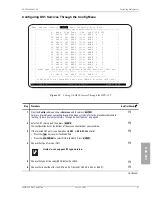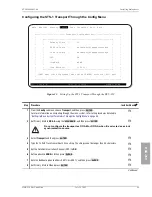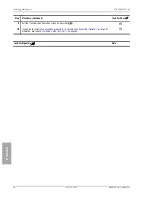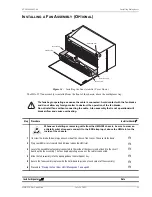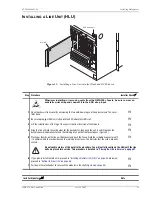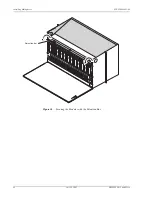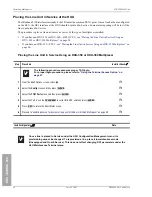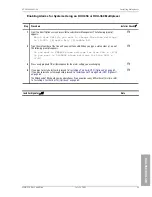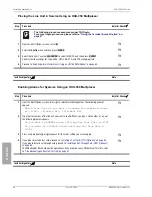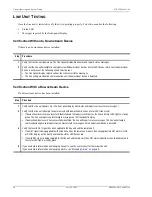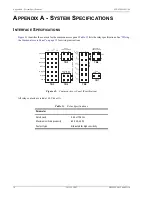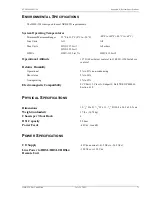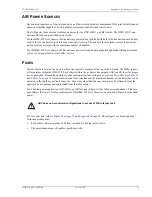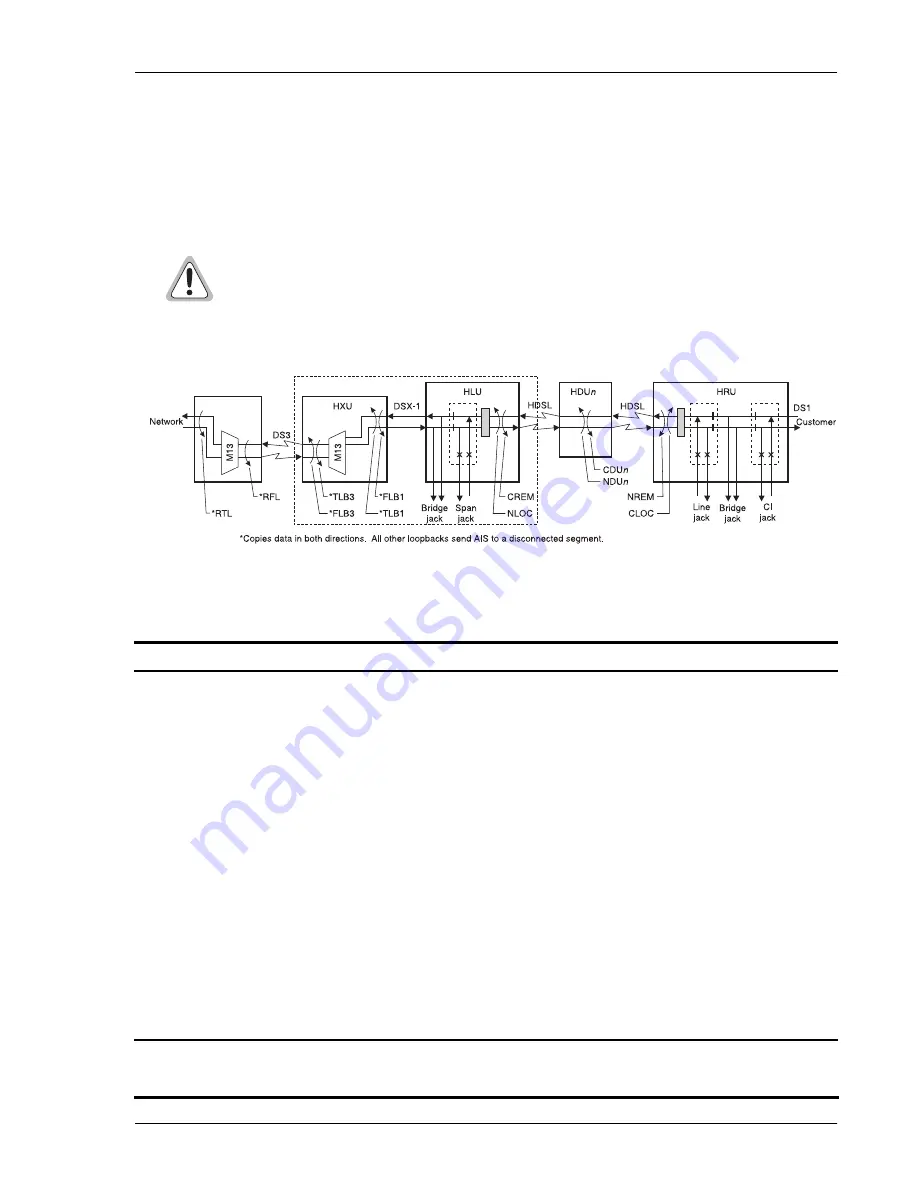
LTPH-SM-1052-04
Troubleshooting and System Testing
HMS-358 List 5 and List 6
July 14, 2002
61
T
ROUBLESHOOTING
AND
S
YSTEM
T
ESTING
shows system loopbacks and test access points. You can do additional system tests through test cards
(see
“Installing a Test Card (HTC) (Optional)” on page 62
). You can route multiplexer output to provide local
access to any DS1 or E1 channel on the DS3 transport at an electrical DSX-1 or E1 cross-connect point using
cut-through cards (see
Figure 38.
System Loopbacks and Test Access
Removal and replacement of line units should not be your first approach to troubleshooting.
You will lose important performance management information which may help you resolve a
line problem. Before making a call to Product Support, read the Performance Management
history and conduct voltmeter tests for leakage to determine if the source of trouble is a
marginal line or a facility problem.
Table 9.
System Loopback Definitions
Test Point
Loopback Definition
TLB3
(a) (b)
(a) To perform this loopback command, the DS3 and T1/E1 ports can be in any mode other than IN-SRVC.
(b) Copies data in both directions. All other loopbacks send AIS to a disconnected segment.
Terminal loopback to the customer at the DS3 line. Activate from the HXU-358 or HXU-360 Test menu.
FLB3
Facility loopback to the network at the DS3 line. Activate from the HXU-358 or HXU-360 Test menu.
Terminal Loopback to the network at the DSX-1 line. Activate from the HXU-358 or HXU-360 Test menu.
FLB1
Facility loopback to the customer at the DSX-1 line.
RFL
Remote facility loopback from the far-end DS3 line. Activate from the HXU-358 or HXU-360 Test menu.
RTL
Remote terminal loopback from the far-end DSX-1 line. Activate from the HXU-358 or HXU-360 Test menu.
CREM
Customer remote loopback is activated by selecting the line unit on the Shelf Status Screen and then the Loopback
Mode selection from the HLU Maintenance Terminal Main Menu.
NLOC
Network local loopback is activated by selecting the line unit on the Shelf Status screen and then the Loopback
Mode selection from the HLU Maintenance Terminal Main Menu.
CDUn
(c)
(c) The number of the doubler.
Customer doubler n loopback is activated by selecting the line unit on the Shelf Status screen and then the
Loopback Mode selection from the HLU Maintenance Terminal Main Menu.
NDUn
Network doubler n loopback is activated by selecting the line unit on the Shelf Status screen and then the
Loopback Mode selection from the HLU Maintenance Terminal Main Menu.
CLOC
Customer local loopback is activated by selecting the line of the Shelf Status screen and then the Loopback Mode
selection from the HLU Maintenance Terminal Main Menu.
NREM
Network remote loopback is activated by selecting the line on the Shelf Status Screen and then the Loopback
Mode selection from the HLU Maintenance Terminal Main Menu.

